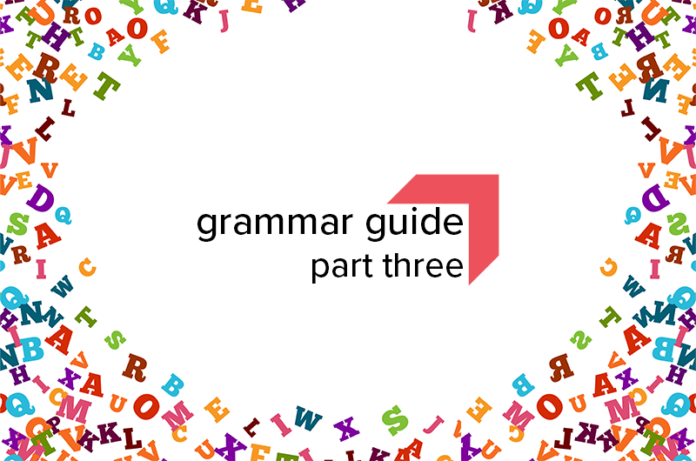Last time on the Aspiring Accountants Writing Guide we discussed the simple verbs tenses; today we’ll take a look at those oddly-named perfect tenses in a bid to understand why they’re considered so flawless.
Present Perfect
The perfect tenses are made by combining the verb have with the confusingly-named past participle of a verb (remember the past participle is the –ed form of the verb, walked, for example). The past particle, as you will see, does necessarily refer to the past which is helpful. Let’s look at a few examples of the present perfect:
You have spoken with the lawyer.
He has written the email.
We have argued our point.
OK, so the past particle doesn’t always use the ed form; this is because there are a fair number of quite common irregular forms, but this is a problem for another day. We’ve italicized the important parts above, and you can see that in each sentence we’re talking about an event or action that has already happened. So how can it be called present perfect? The key point to remember is that it implies there is a connection to the present.
Like our other verb forms, there’s also a progressive (or -ing) form that follows a pattern you’ll likely remember from last time. In the progressive form, we use have and been along with the -ing form of the verb. Let’s take a look:
Wendy has been waiting for an hour.
Although the oven is broken, he has been cooking all day.
They have been going out for dinner every Friday for 10 years.
Wouldn’t you agree there’s more immediacy about the progressive form? The implication from the first sentence is that Wendy arrived an hour ago and she continues to wait – there’s our connection with the present once again.
Past Perfect
So if present perfect connects past to present, what can the past perfect do? The past perfect forms are particularly useful for connecting two past actions or events in relation to one another. Sound complicated? Let’s take a look:
He had just arrived when she collapsed on the floor in a fit of joy.
Leicester City had won the title for the first time in their history, but just a year later they found themselves in a relegation battle.
I had asked to be excused, yet the teacher insisted I stay and finish the exam.
In each example, there are two actions or events being spoken about in relation to each other; sometimes those events can be chronologically close, whereas in other examples you can have quite some time in between. Sometimes the actions are directly related, but often it’s the writer’s choice to align these events.
There’s also a progressive form of the past perfect using had, been and the ing form:
They had been looking for the keys for an hour when the dog came in with a smile on its face.
The team had been leading the match for 89 minutes when the referee abandoned the match due to bad weather.
She had been reading when the earth began to shake.
The past perfect progressive form works to bring the reader straight into the action; it also brings the two actions into direct chronological contact.
Finally, we move onto future perfect and future perfect progressive. Again, these forms help us connect two events, only this time they’re in the future. We often use future perfect to talk about things we expect to happen by a certain time. We will be using will along with have and the past particle to form the future perfect:
They will have won the title again by the time I graduate, said Billy (with a hint of irony).
If you continue like this, you will have finished all the food before anyone arrives.
Finishing that course means that Donald will have been at the community college for five years.
Let’s see how the situations change when we add in the progressive form (will, have and ing):
Let’s go! The film will have been playing for 15 minutes by the time we get there.
By that point, we will have been running for 22 miles.
He will have been working here for several years before he gets the raise he deserves.
Thanks for dropping by, and we hope this guide has been useful! Want to keep up to date with all our study tips? Sign up for the Aspiring Accountants’ weekly newsletter and let us do the legwork for you. Check out our other writing guides.



















